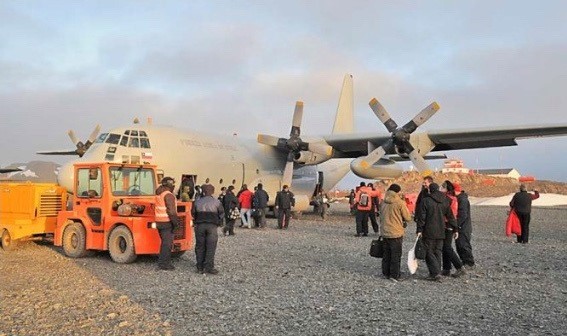The maintenance works could start by the end of 2021.
The design studies of the technical assessment hired by the Ministry of Public Works, to quantify the investment required for the new maintenance works, which are expected to start by the end of 2021 on the airstrip of Teniente Rodolfo Marsh Airfield, at President Frei Montalva Base, on King George Island on the Antarctic Continent, are well underway.
Yesterday, José Fernández, Intendant, led an online meeting with personnel from the Airport Authority and the Ministry of Public Works, to be briefed on the progress of the work.
The regional authority highlighted that it was very important, for the region and for the world, to maintain the airstrip operating and in good condition because it is the air access to the white continent.
Fernández explained that yesterday the aspects related to the maintenance design studies of the airstrip were analysed; thus confirming the importance of moving forward with projects that are part of promoting Magallanes in the white continent. He added that Chile is complying and developing all of the Antarctic’s potential.
The regional director of the Airports, under the authority of Public Works, Hardy Rehbein, reported that around 272 million Chilean pesos were allocated to carry out these studies, which will be performed by consultant company Faicc. These began on 24 July 2019 and, pursuant to the contract, should end on 14 January 2021.
He stated that once the design studies and basic engineering end, they will prepare the estimate of the actual costs. With the Public Works Ministry financed funds there will be call for bids to be awarded next year so that the works start in the summer of 2021-2022.
The works will allow performing the maintenance of the complete landing airstrip, 1292 metres long and 39 metres wide, as well as the airfield parking area, which is one kilometre from the base and Villa las Estrellas.
He explained that the current granular material was adequate and that it will be removed and mixed, to cause the minimum impact possible.
Likewise, three options were assessed to use on the surface: maintain the granular material, develop a surface made of adocreto (concrete cobblestone) or use granulated material with chemical stabilisers. Rehbein said that they prefer the second option, using adocreto; so they will do some testing by applying that material to an area of the parking slab, to assess the material behaviour in respect of withstanding the weather.
